Bathing women have been a popular subject for artists since the Renaissance, but very few painters managed to capture this intimate moment the way that this Dutch artist did.
Rembrandt van Rijn (1606-1669) is sometimes referred to as the greatest artist in history and he certainly influenced a lot of painters of future generations.
One of his greatest masterpieces probably depicts his much younger partner in the 1650s who is featured in a Biblical story from the Old Testament.
In this article, we’ll take a closer look at some of the most interesting facts about Bathsheba at her Bath by Rembrandt, a special work of art for multiple reasons.
1. It was completed at a time when Rembrandt faced financial difficulties
Bathsheba at her Bath is the title of one of the most famous paintings by Rembrandt van Rijn, the renowned Dutch artist who lived during the Dutch Golden Age.
He was one of the greatest exponents in the field of art during this period in the 17th century when the Dutch Republic was one of the leading nations in the world.
Rembrandt started his career in his native Leiden but moved to Amsterdam in the 1630s. This city was increasingly becoming the economic and cultural center of the Dutch Republic at the time.
Rembrandt carved a great career for himself, helped by the copious amounts of talent he was blessed with. Unfortunately, managing his finances wasn’t his strength so he struggled during the final years of his life.
He completed this painting in 1654, a time when he was already trying to avoid bankruptcy.

2. It depicts the story of King David and Bathsheba from the Old Testament

The painting depicts the story told in the Second Book of Samuel (2 Samuel 11) of the Old Testament. King David had been spying on Bathsheba while she was taking a bath.
He ended up impregnating the married woman and had to come up with a solution to hide his sin. He sent her husband to battle in the hope he was being killed in combat.
To make things worse, he ordered his generals to abandon her poor husband Uriah so he would meet a certain death.
His plot worked and David was able to marry Bathsheba. This painting depicts the moment that King David is spying on the bathing woman.
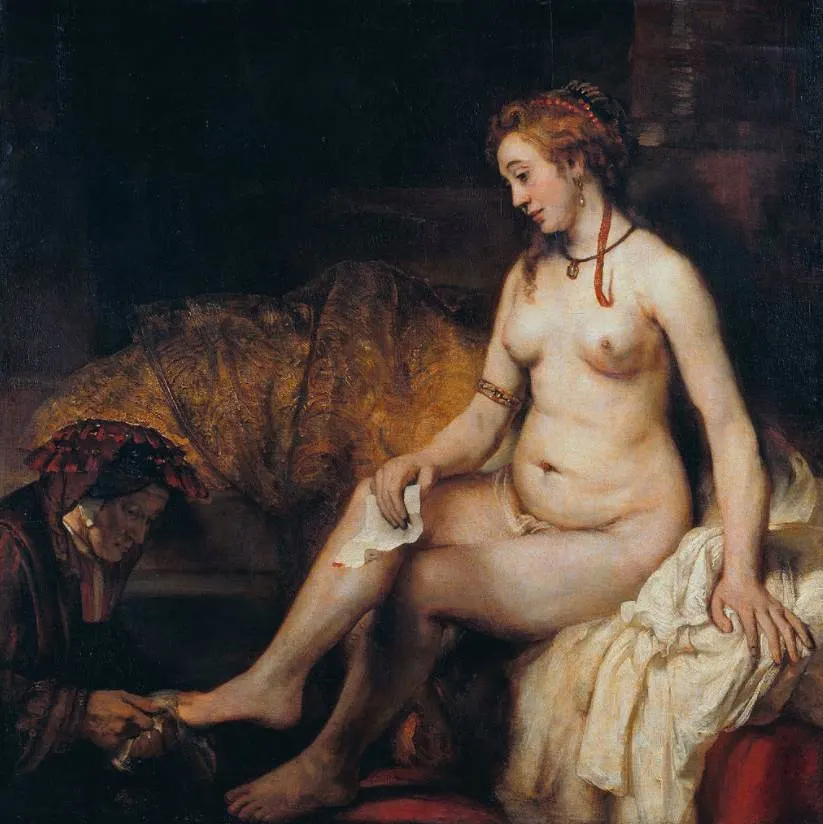
3. The model was probably his partner with whom he had a daughter the same year
Art historians are fairly certain that this painting depicts Hendrickje Stoffels (1626-1663), the partner of Rembrandt during the final part of his life.
The couple had been together almost since the moment that she became his maid in 1647. She was in his early twenties and he was already in his early forties at the time.
The couple never married because there was a financial settlement in the will of his deceased wife Saskia. They stayed together, however, until she passed away in 1663.
The couple had a daughter, Cornelia van Rijn (1654-1684), who was born in the same year that this painting was completed in 1654.
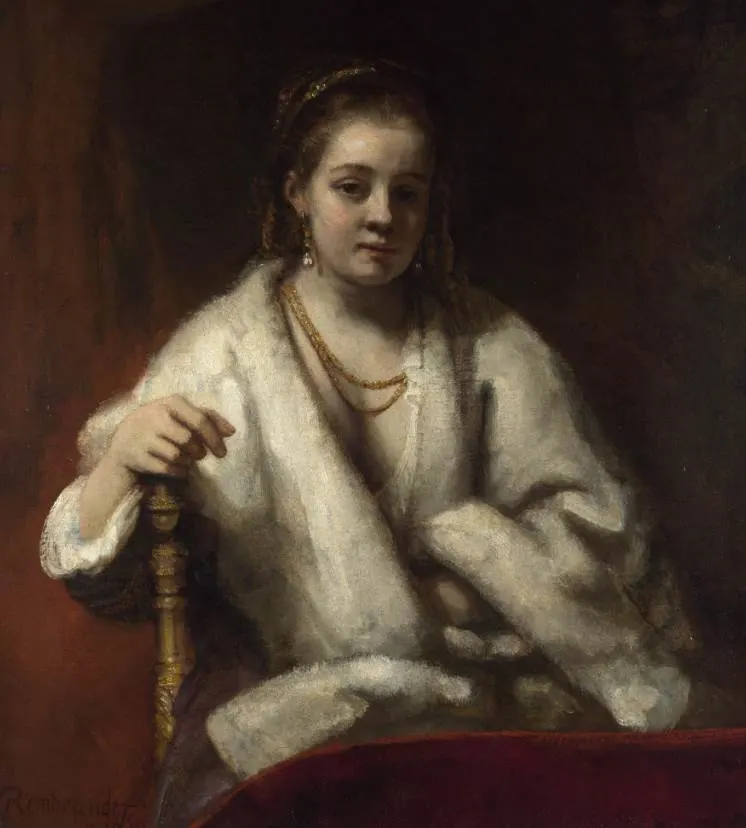
4. Rembrandt’s painting differs in many ways from earlier depicting of the story
The story of Bathsheba taking a bath while being spied upon by King David has been depicted many times in art history.
Early Netherlandish artist Hans Memling (1430-1494) already completed a version in 1480 and several artists of future generations did so as well.
Rembrandt’s version is by far the most famous of all because it’s completely different in multiple ways.
- The setting seems to be indoors – There are some architectural details in the background.
- Bathsheba is depicted realistically – Most earlier versions present an idealized version of the woman.
- The focus is on the erotic element – Rembrandt highlighted Bathsheba’s body quite sensually as she dominates the relatively small space.

5. The mystery of the deformed left breast has probably been solved
Upon closer inspection, you’ll notice that the left breast of the model is deformed.
This not only emphasizes the fact that Rembrandt aimed to depict the model as realistically as possible but also highlights a medical condition.
Some suggestions have been made such as breast cancer, an abscess due to tuberculosis, and lactation mastitis (she gave birth the same year).
An Italian professor named Paolo Zamboni came to the conclusion that it’s a thrombophlebitis of a vein of the breast which causes the swelling.
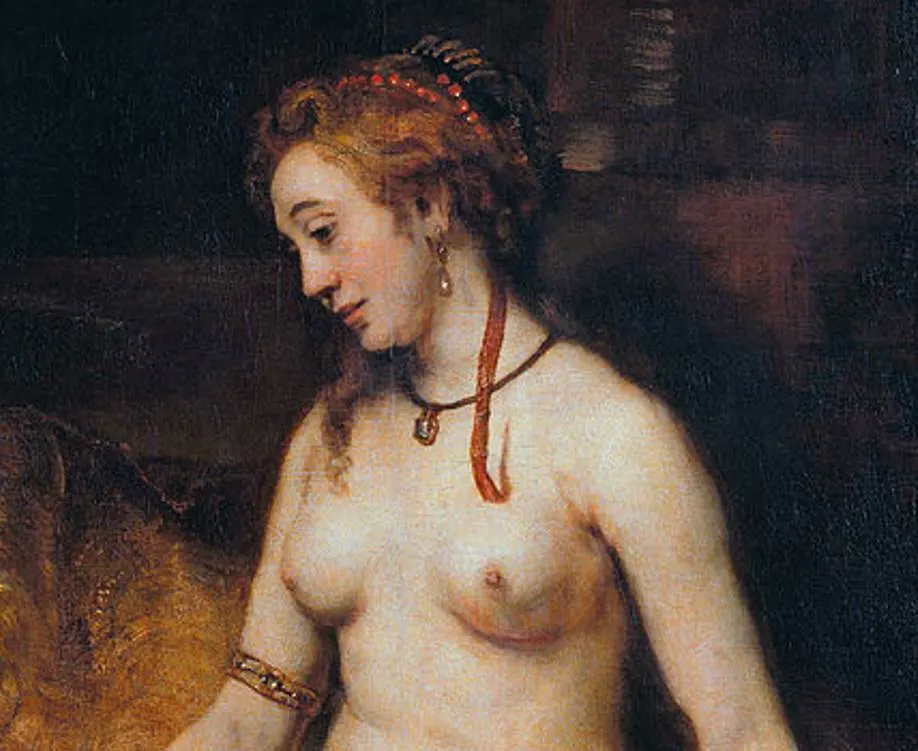
6. The artist already painted Bathsheba over 10 years earlier
Rembrandt completed many paintings inspired by the Old Testament, and Bathsheba was featured multiple times.
He already completed a version of Bathsheba taking a bath over 10 years earlier in 1643. “The Toilet of Bathsheba” (1643) is part of the collection of the MET in New York City.
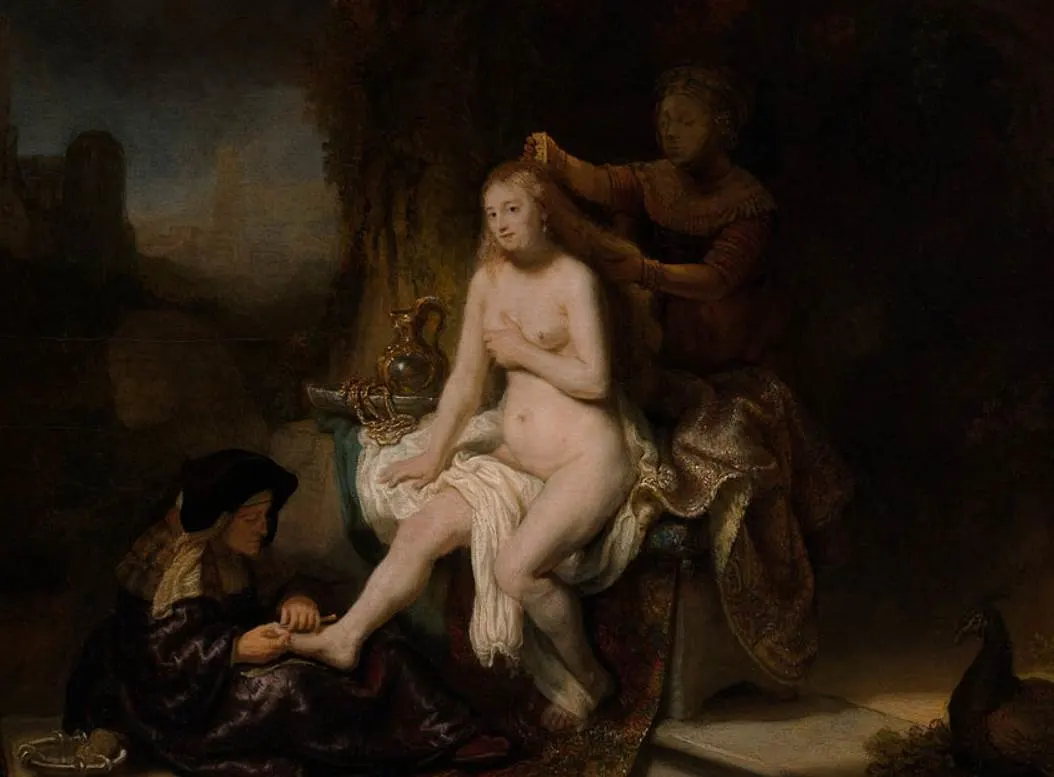
Another painting that he completed around the same time as Bathsheba at her Bath is titled “A Woman Bathing in a Stream” (1655).
This probably also depicts Hendrickje Stoffels and shares the same intimacy seen in his earlier work. It’s part of the collection of the National Gallery in London.
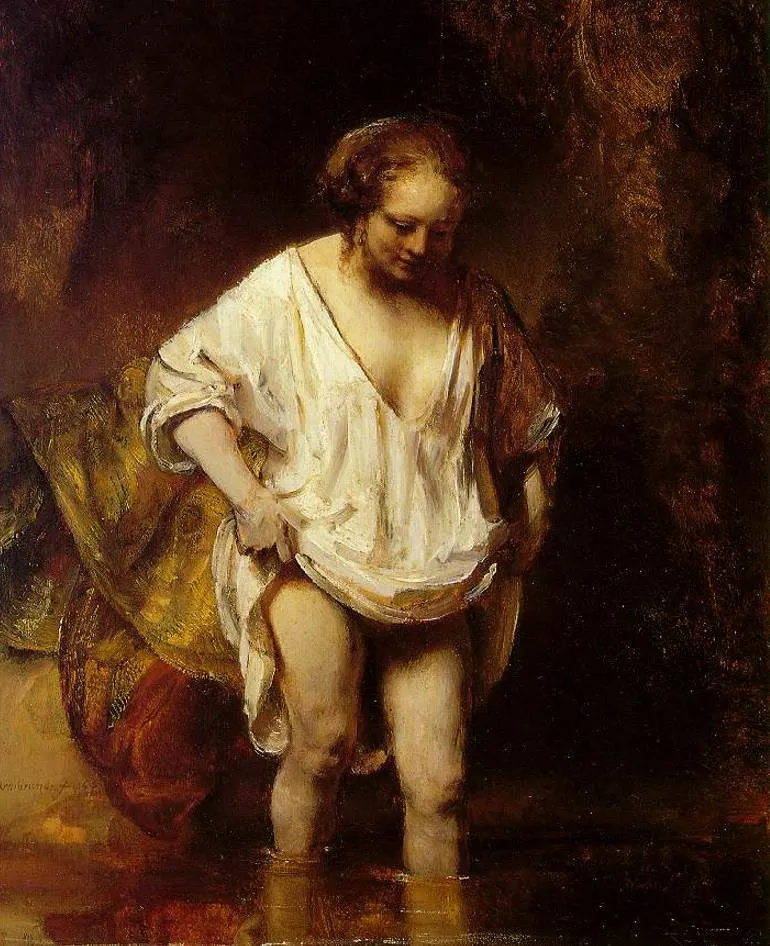
7. How big is Bathsheba at her Bath by Rembrandt?
The Dutch painter was one of the most versatile artists in history. He completed both monumental works of art and much smaller works.
Bathsheba at Her Bath by Rembrandt van Rijn is a life-sized oil on canvas painting that has dimensions of 142 × 142 centimeters (56 × 56 inches).
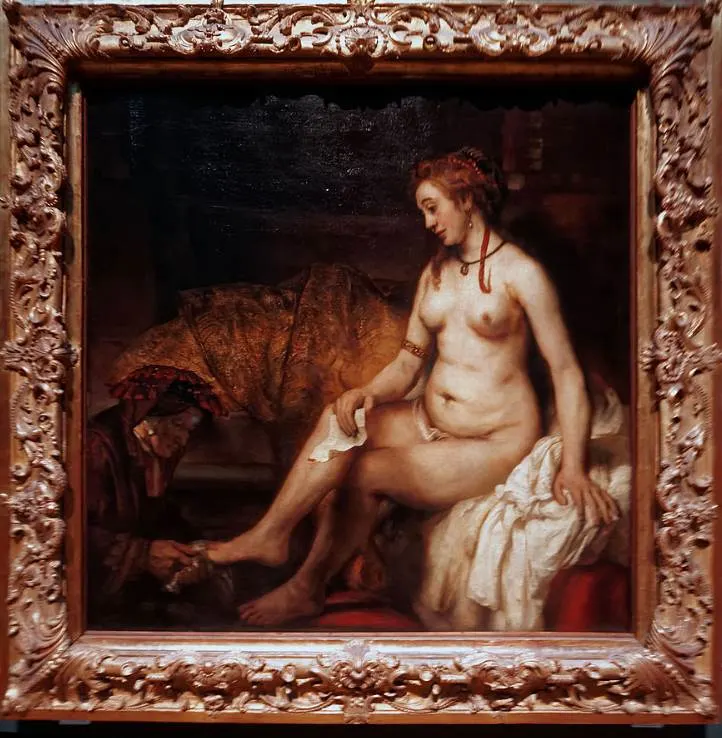
8. Where is the painting located today?
The painting was in the extensive art collection of a French Physician named Louis La Caze (1798-1867) in the 19th century.
After he passed away, he bequeathed 583 paintings to the Louvre museum in Paris, one of the largest collections that the museum in Paris ever received.
Today, Rembrandt’s masterpiece is still one of the highlights at the Louvre, the world’s most-visited museum.

